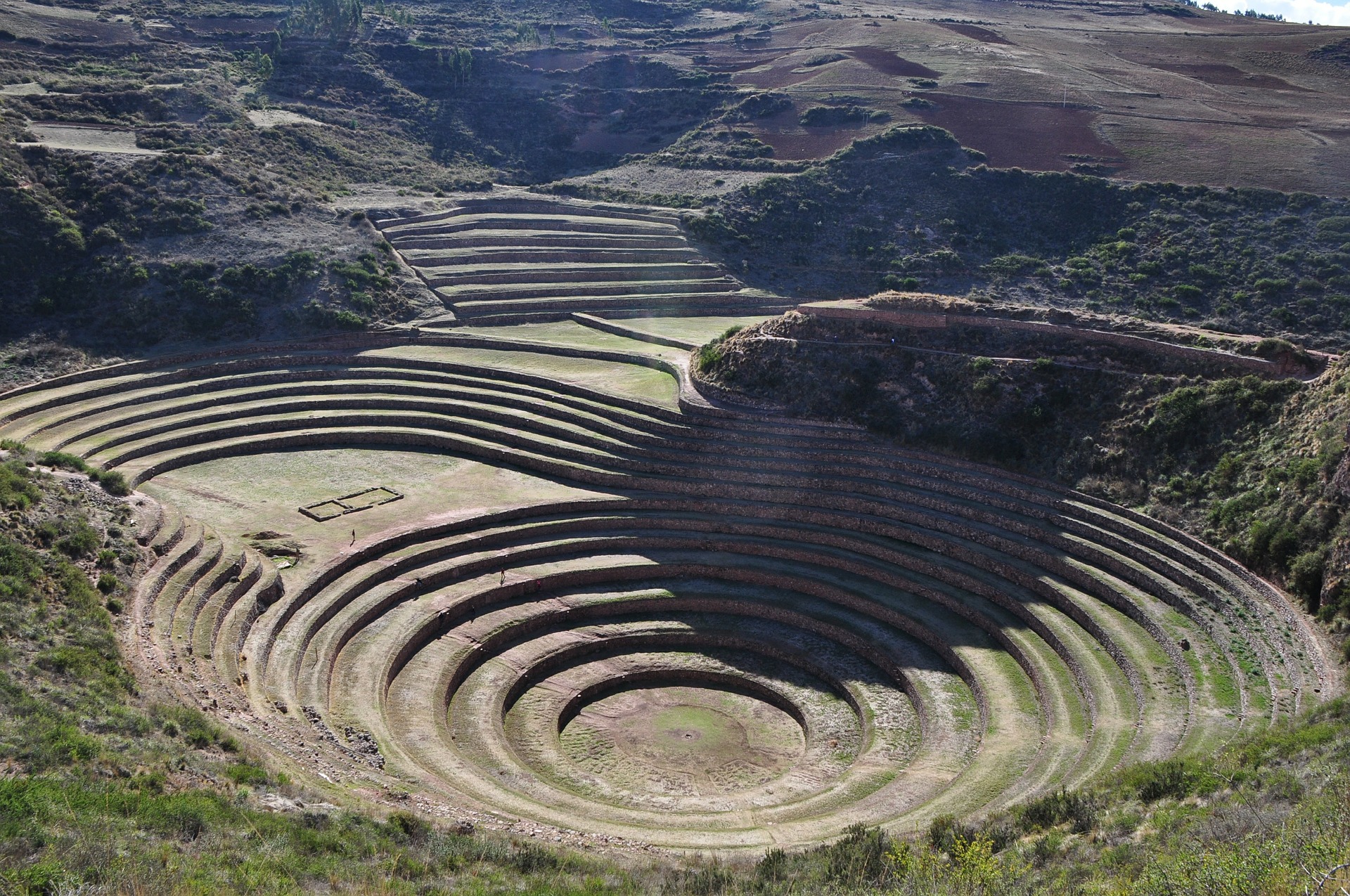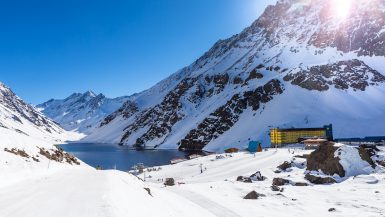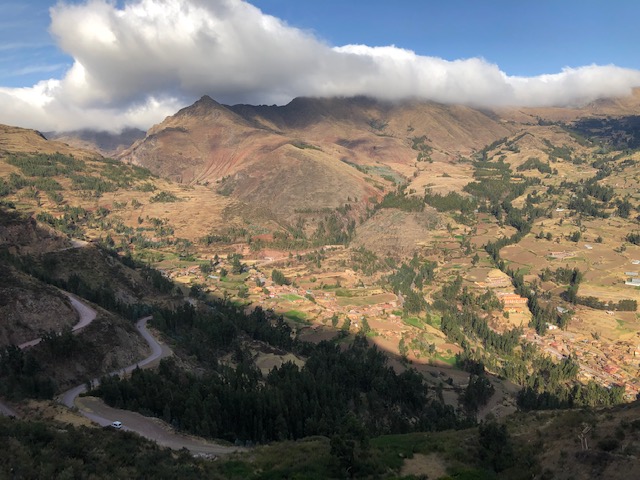
The Sacred Valley, one of the most insteresting places to visit in Peru, was the epicenter of the Inca Empire which flourished in the 15th and early 16th centuries. The rich soil of the valley enabled the Incas to use their agricultural genius to harvest an abundance of crops.
Located just north of the Inca capital of Cusco (Cuzco), the valley boasts jaw-dropping sights of the Andes Mountains and fascinating Inca ruins. Using Cusco as your base, it is easy to visit each highlight one by one or combine several into an amazing day tour.
Here are five must-see sights for any trip into Peru’s Sacred Valley!
Chinchero

This cozy community is the perfect starting point to catch marvelous views of the Sacred Valley. Below a 17th century church, you will find exquisitely crafted terraces commonly seen in Inca agricultural techniques.
Rugged mountains and a snow-capped peak surround the cascading rows of terraces to create a visually stunning panorama.
Another fascinating highlight of a trip to Chinchero are the visual demonstrations of Peruvian textiles. Watch locals explain the step by step process of transforming alpaca wool into colorful clothing.
Moray
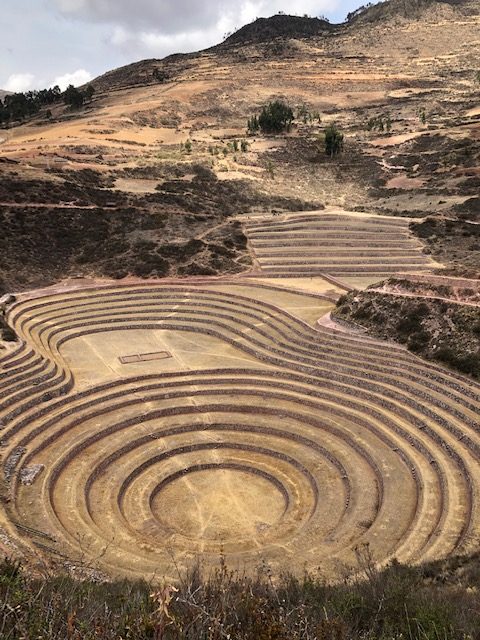
A bird’s eye view of the round terraces at Moray, Peru, is truly a sight to behold. In addition, the Inca ruins reveal how the Incas were masterminds of science and agriculture.
The intricate design of the circular indentions creates a different temperature at each terrace. This unique ability to harness the wind made the Incas extremely versatile with the crops they attempted to grow at the site.
The crafty experimentation led to the development of thousands of varieties of potatoes and hundreds of types of maize. These two crops became staples of Peruvian agriculture.
Maras Salt Mines

When you descend a steep canyon outside the charming town of Maras, Peru, thousands of majestic pools of salt await. The salt flats have been used for centuries to collect and sell numerous varieties of salts.
After the salty water trickles down from the mountainside to the pools, evaporation is used to harvest the salt. Most of the pools are owned by families and you will often see locals harvesting the salt during your visit.
Don’t forget to pay a visit to town to sample the colorful types of salts and see which one you fancy the most.
Ollantaytambo
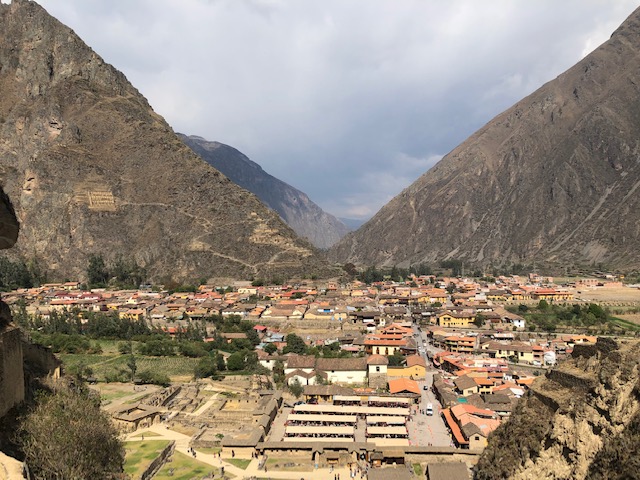
Although viewed by most as a launching pad to the iconic Machu Picchu, the town of Ollantaytambo, Peru, also boasts impressive Inca ruins.
Ollantaytambo’s mighty fortress overlooks the town and the top provides breathtaking scenery of the valley and surrounding mountains. The terraces that complete the structure are tremendous in size and you must climb hundreds of steps to reach the top. The Temple of the Sun sits atop the fortress and you will notice the stones that were an important aspect of Inca religion.
You will notice other ruins built into the mountain on the other side of town. These were storehouses the Incas used to protect belongings and the holes in the structure provided a ventilation system. Also, notice the face carved into the side of the mountain believed to represent Viracocha, the Inca creator deity.
Pisac

The well-preserved ruins at Pisac, Peru, are possibly the most visually stunning you will find in the Sacred Valley and definitely should be on top of your list of things to do in Peru.
Endless rows of terraces climb up a mountainside that tower over the quaint town below and sweeping valley in the distance. Standing atop the ruins offers some of the most spectacular views of the Andes Mountains you will find anywhere in Peru.
When you explore the ruins, you will realize how dynamic of a site this was during the Inca civilization. The site contains housing structures, a cemetery and a magnificent Sun Temple. Furthermore, it is believed that the vital position of Pisac served as a barrier of protection for the empire.


